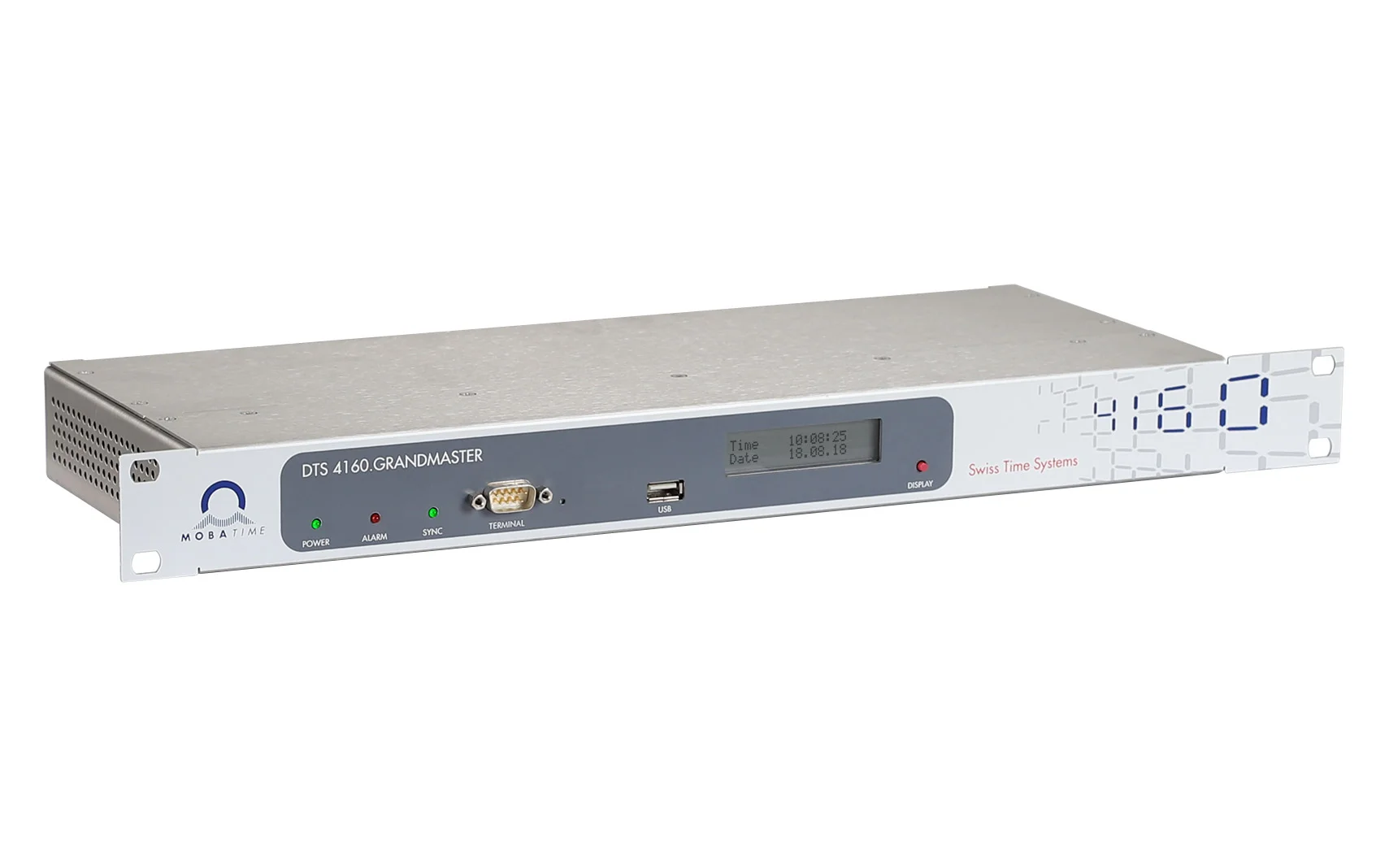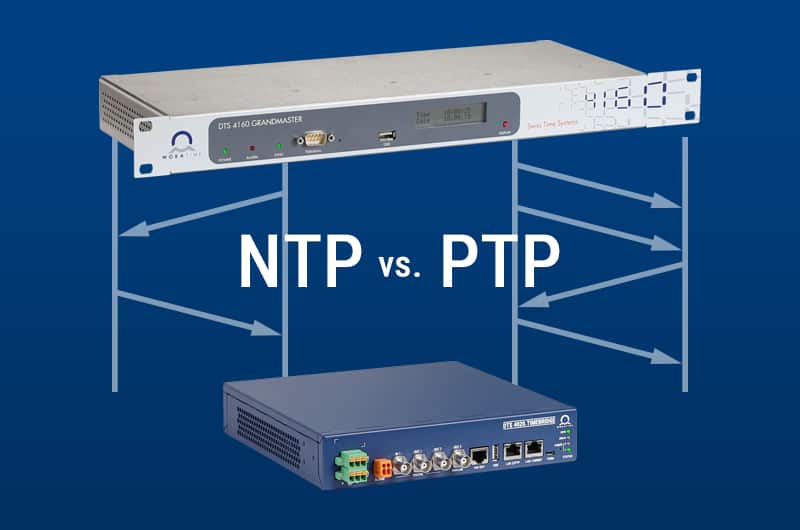Both, PTP and NTP provides time synchronization over a packet-based network. PTP defines synchronization messages used between a Master and Slave clock similar to the Server and Client mode used in the Network Time Protocol (NTP). Nevertheless, not both protocols are dedicated to the same applications. It depends on the system’s needs, which of the protocol is preferred.
The comparison is requirements specific and may differ in actual applications! An attempt was made to contrast the basic factors. The basic factors were compared against each other in order to show the advantages of the respective protocol. It is important to understand that there is no clear dividing line and that the application ultimately determines the choice of protocol.
Both NTP and PTP time servers use network time protocols to serve time to other devices on the network and achieve time synchronization.
► NTP used for ‘application level’ synchronization
- Coarse level granularity
- Requirement for synchronization guarantee does not exist
- Example: time-stamping error log files
► PTP used for precision synchronization
- Mission critical applications
- Dedicated hardware to minimize on-path issues
- High end algorithms to eliminate network & equipment jitter
Network traffic
The load of both protocols depends mostly on the configured settings.
Number of clients
NTP:
Using the Multicast mode, there is basically no limit for the number of clients. The NTP time packet is sent out to all clients at once, therefore the number of clients is not relevant for the server and does not increase its load.
In Unicast mode, the NTP server needs to answer every request from a client individually. Powerful state of the art NTP servers are capable of answering several thousand requests per second without reducing the accuracy.
For the client itself the number of other clients in the network is not relevant.
PTP:
Mostly PTP is using multicast communication and therefore the network load is increasing with every connected device. Each device needs to be capable of handling all the transferred multicast messages in the network.
In this configuration, the maximum number of clients is depending on all connected devices not only the master. If Unicast mode is used, this limitation is removed and the limit is only defined by the Grandmaster. Grandmasters are capable of answering several thousand requests per second without reducing the accuracy. Overall the number of clients, which can be handled is highly depending on the Intervals configured.
Which is the right protocol for your application?
DISCLAIMER: The information below is not generally valid. It is important to understand that there is no clear dividing line and that the application ultimately determines the choice of protocol.
Both, PTP and NTP provides time synchronization over a packet-based network. But not both protocols are dedicated to the same applications. It depends on the system’s needs, which of the protocol is preferred.
NTP is the choice for all applications, for which a synchronization accuracy in the range of Milliseconds is sufficient. For those applications, NTP is the simplest and most economical solution. It is reliable, robust and simple to configure. NTP does not require any special configurations or equipment in the underlying network.
Typical NTP Applications are:
- Synchronization of clocks
- Logfiles
PTP is needed where a higher level of precision is required. With PTP sub microsecond or even nanosecond accuracies are feasible. The key of PTP is hardware timestamping. Only if the timestamping happens close to the wire, it is possible to reach this high level of accuracy. The drawback of it is the need for dedicated hardware and an engineered network.
Typical PTP Applications are:
- Telecom – Synchronization of the base stations
- Traffic control – synchronization of different control equipment or different sites
- Broadcast – synchronization of audio and video equipment
- Energy – Synchronization of substations
- Banking – Synchronization for high speed trading
5. How can Mobatime support?
MOBATIME provide NTP and PTP products, which offers highly precise interfaces such as PRC, PTP IEEE1588 V2, NTP, etc. with an advantage of precision in accuracy as well as traceability. Grandmasters and Time Server are equipped with crystal or atomic oscillators to provide time, pulse, phase & frequency solutions supporting synchronization using Global Navigation Satellite System for a mid or large infrastructure network.

NTP Time Servers synchronize your networks with high precision and reliability. All systems in the IT network have the exact time thanks to synchronization via NTP. Events can therefore be arranged chronologically thanks to precise time stamps.
- high-precision time for all network environments
- NTP (Network Time Protocol) time server for various applications
- Combination time server master clock for use in complex clock systems
PTP Grandmasters are combined time and synchronization systems that stand for maximum precision and availability. They can be used as IEEE-1588 PTP grandmasters and thus meet the basic requirements for compliance with the strict MiFID II time accuracy specifications in the field of high-frequency trading, for example.
- extremely stable and high-precision thanks to rubidium oscillators
- very accurate in freewheel mode
- PTP (Precision Time Protocol) time server for various applications

PTP Slave product – DTS 4020.timebridge allows to convert PTP signals into legacy signals.
